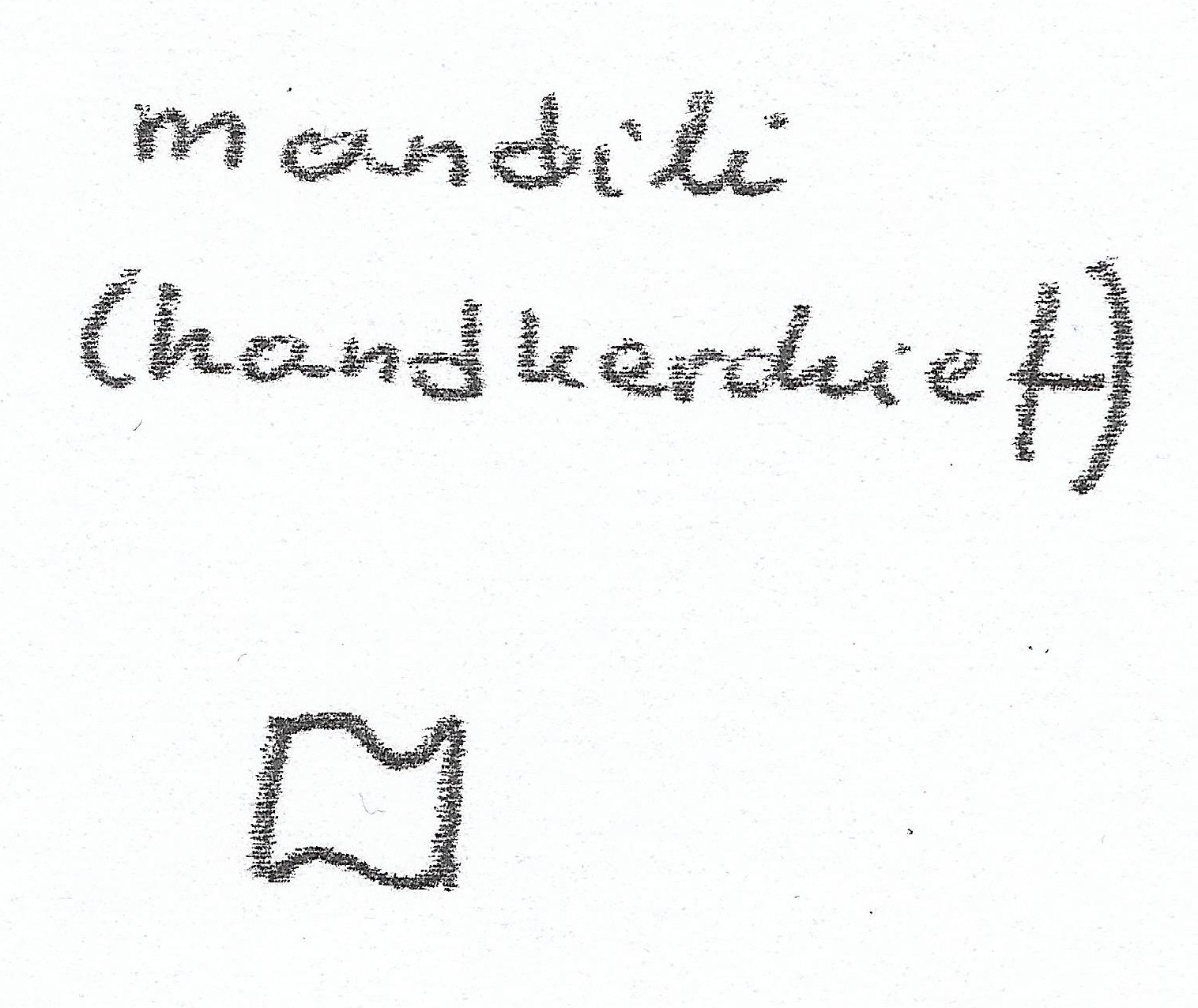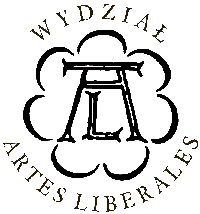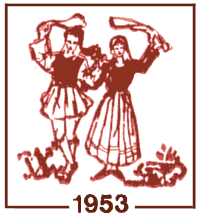| Testimony of: | kerchief |
| Source | Οικονομίδης 1928-1931,161 (in EEH, sv. Μαντίλια, p. 369-370) |
| Original text | Η γαμήλιος πομπή με άσματα και χορούς διευθυνομένη εις τον ναόν έπαυε ταύτα ότε επλησίαζεν εις αυτόν, αντ' αυτών δε έψαλλε το τροπάριον του αγίου επ' ονόματι του οποίου ετιμάτο ο ναός. Εν τοις χωρίοις του Ντορουλίου μέχρι του ναού αι παρανύφισσαι και όλαι αι γυναίκες του χωρίου έπαιζον τα μαντήλα, ήτοι εχόρευον τον χορόν των μανδηλίων ως και κατά το νυφέπαρμαν, ενίοτε δε μεταξύ αυτών και άνδρες χορεύοντες έπαιζον μαχαίρια (κάμες). Και εν Αμισώ καθ' όλον το διάστημα της μεταβάσεως εις τον ναόν και της επιστροφής γυναίκές τινες εχόρευον υψώνουσαι δια των χειρών μανδήλια εις ένδειξιν χαράς. |
| English translation | The wedding procession with chants and dances was becoming silent as it approached and entered the shrine, beginning to chant the hymn [troparion] to the saint who was the patron of the specific shrine instead. In the village of Ntorouli all the bridesmaids and women of the village danced the dance of the kerchief, and after taking the bride to the groom’s house [nyfeparma] there was a dance of knives [kama type] between them and the men. And in Amiso, during the entire procession to the shrine and the return, the women were dancing with kerchiefs high in their hands showing their joy. |
| Time/occasion of occurence | wedding |
| Region of occurence | Pontus |
| Function | symbolic, |
| Symbol in Kinetography score |
|


